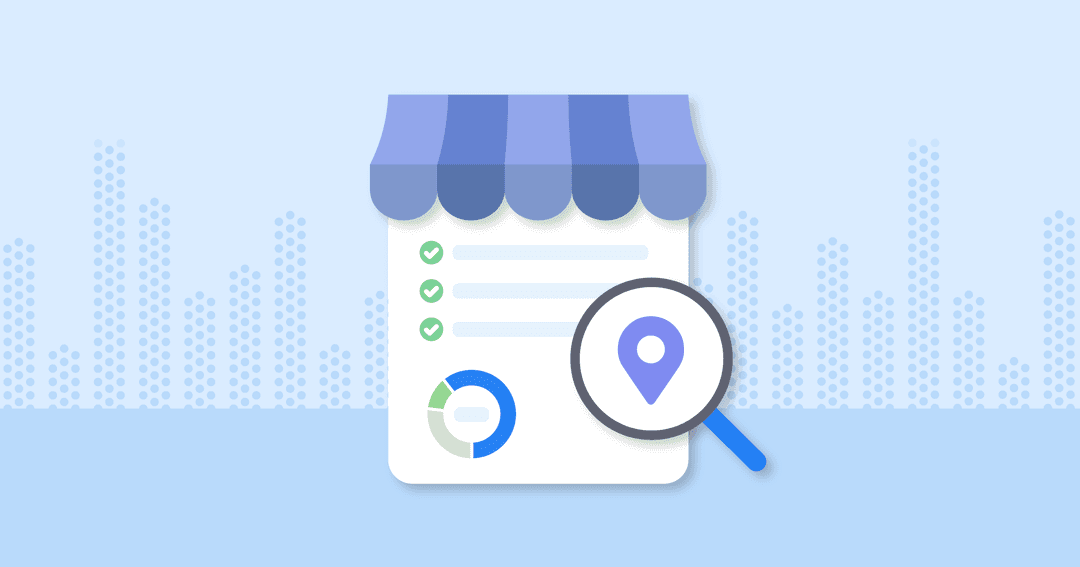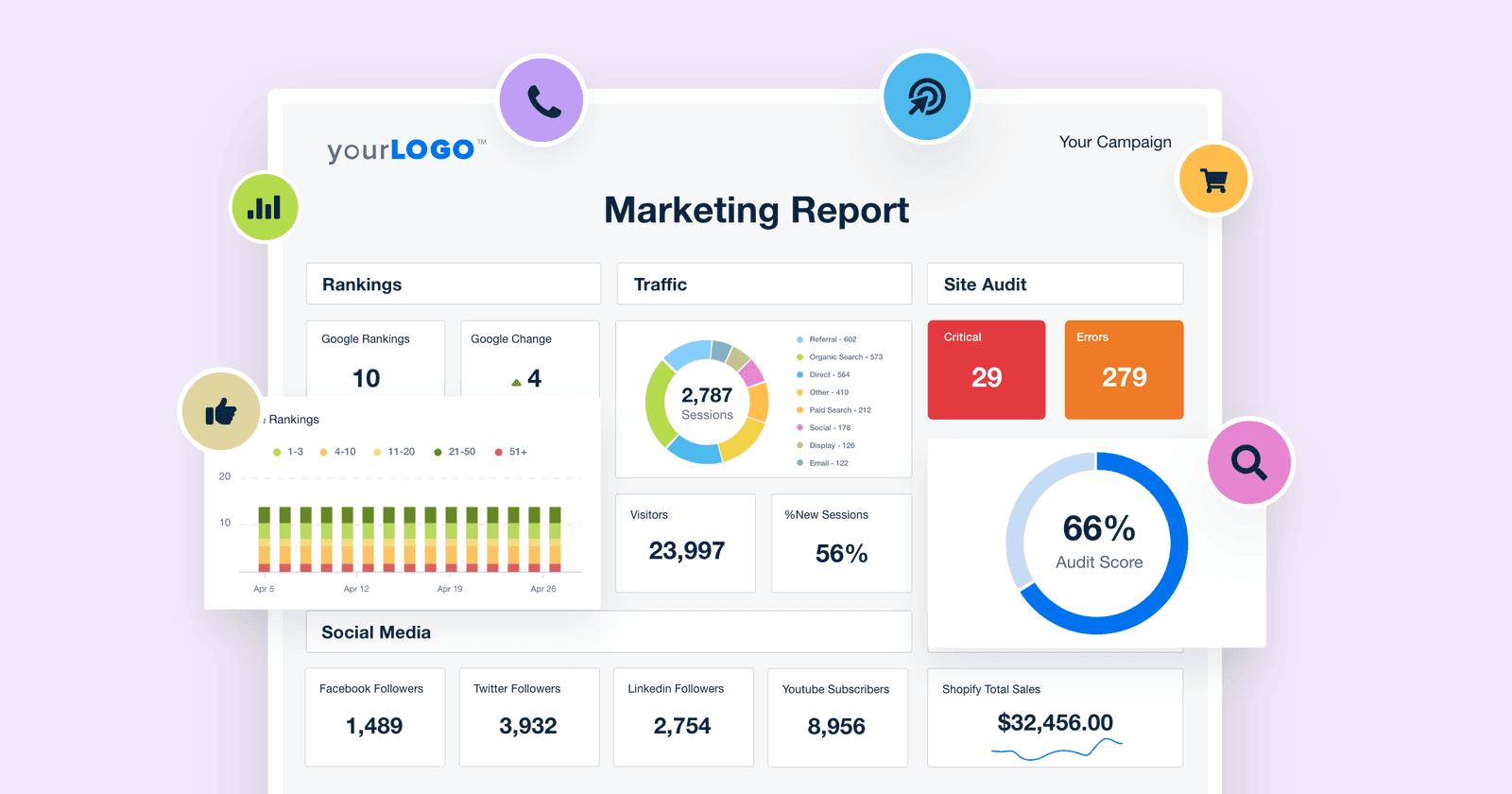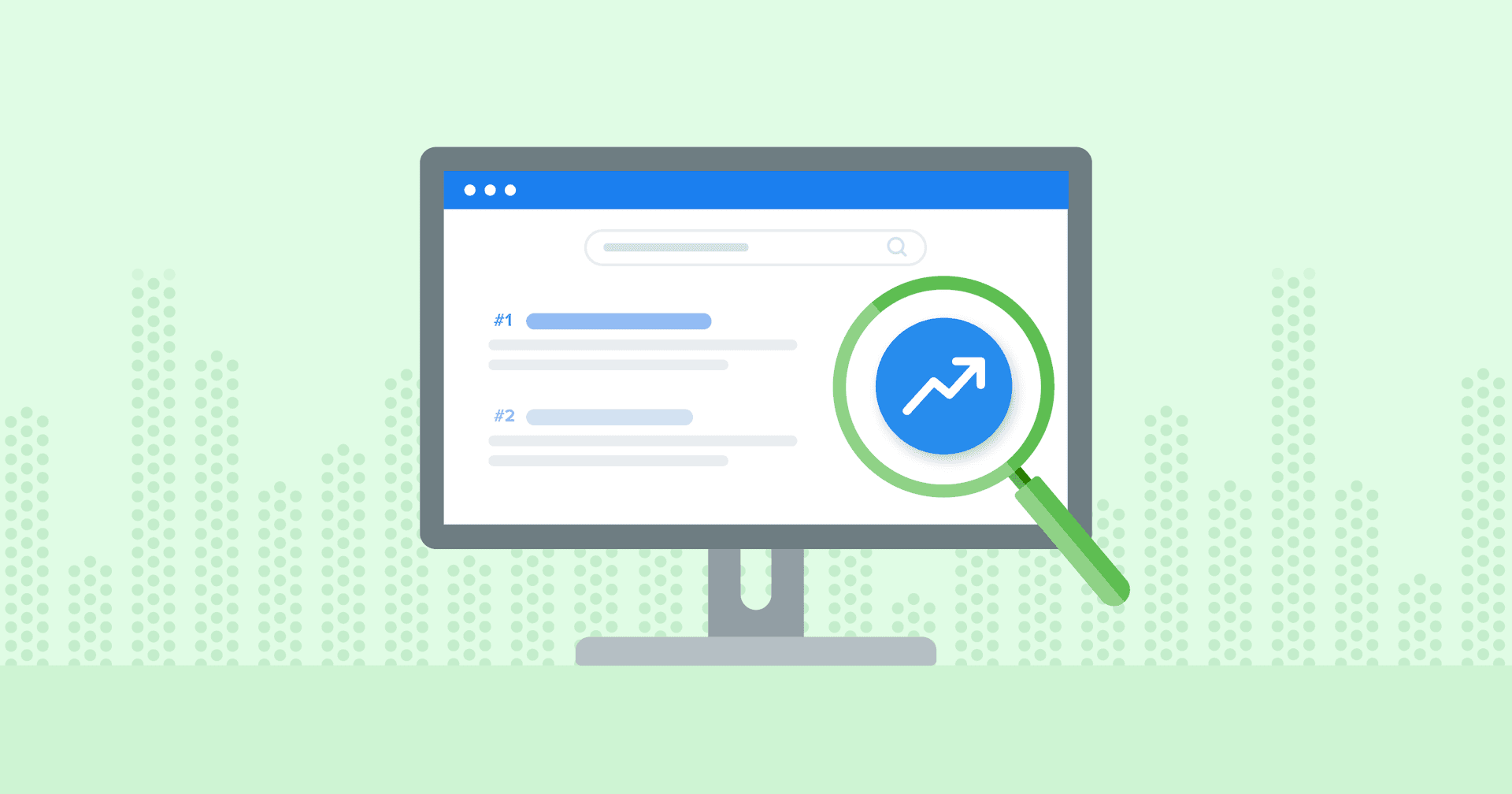Table of Contents
QUICK SUMMARY:
Local SEO improves visibility in location-based searches by optimizing a business's online presence for a specific geographic area. It influences how often a business appears in “near me” results and map packs. This article breaks down key local ranking factors and provides a clear, actionable local SEO checklist to guide ongoing optimization across single or multi-location campaigns.
“I need more customers coming through the door.”
It’s a common plight of local business owners–one that they come to your agency to solve.
Local SEO is a solution to these issues and attracts potential customers at the exact right time. Whether it’s “coffee shop near me” or “24-hour plumber Detroit,” it’s a powerful way to drive in-person traffic and build a solid online presence.
That said, local SEO isn’t a one-time exercise; it’s an ongoing process. For starters, it involves acquiring local backlinks, managing reviews, and website optimization. Clients with multiple local businesses add further complexity, because they’ll need programs tailored to each location. It’s a lot to keep track of.
Even so, achieving local SEO success is definitely possible. It simply requires consistent efforts, a systematic approach, and performance tracking.
In this article, we’ll explore the ins and outs of the top local SEO ranking factors, along with actionable tips and insights.
Why Does Local SEO Matter?
Local SEO is a must-have for any business targeting customers in a specific geographic area.
As we see it, local SEO humanizes local businesses and brings them closer to their target audience. It represents an opportunity for online visibility and personalized communication. It’s an effective way to generate meaningful connections between businesses and their customers.
Anthony Guilhem, President, Momentumm Digital
Simply put, it’s a strategic way to improve visibility, attract targeted traffic, and get engagement from the local community.
Here’s a breakdown of exactly why local SEO is worth the effort.
Enhanced Visibility in Local Search Results
Local SEO helps businesses appear in search queries relevant to their products or services for a specific area.
More specifically, Google has a 3-pack feature that prominently displays top local businesses, map locations, and business details.
The free Google Business listings in the "Map 3 pack" is currently the most prominent feature at the top of the Google search results. Combined with those golden customer reviews, it's an extremely important part of local visibility.
Kira Krostag, CEO and Founder, Site Smart Marketing
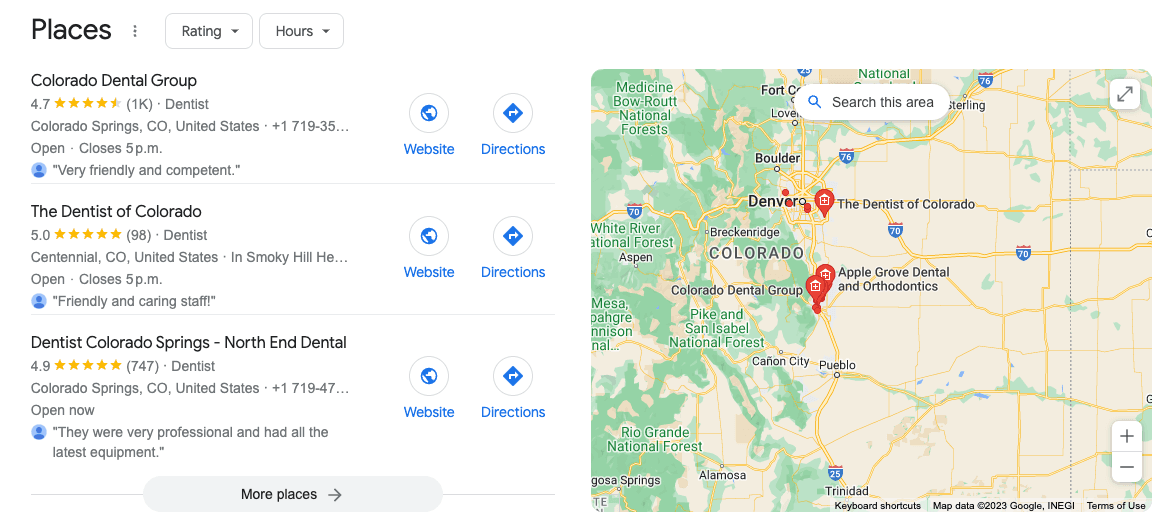
Having a favorable local search ranking (like the above) leads to heightened brand visibility and a better chance of engagement.
Increased Foot Traffic and Local Sales
A solid local SEO strategy leads to more foot traffic for businesses with physical locations (like retail stores, restaurants, and clinics).
Local businesses rely on foot traffic. Think about your average florist client. They don't really want the phones ringing off the hook–they want people to type in "best florist in Portland." For these businesses, "direction requests" is the most important metric.
Joey Randazzo, Owner, Portland SEO Growth Partners
As more people visit these locations, there will be a possible uptick in sales and inquiries. Who knows–it may even create a buzz in the local community. This leads to tangible benefits such as revenue and word-of-mouth referrals.
Improved Online Reputation and Trust
An important part of local SEO is sourcing online reviews, which is essential for building trust and showing your client’s business in a positive light.
Think about it–positive reviews influence customer decisions. It’s a form of social proof, allowing others to vouch on your client’s behalf.
We lean heavily on the words of our customers, not our words. That’s because we can say whatever we want about ourselves.
Lane Anderson, Founder, London Road Marketing
Also, consider that search engines favor businesses that are highly rated and frequently reviewed. It shows local relevance and recent activity, which improves search visibility over time.
Higher Conversion Rates
Local searches often indicate high purchase intent or a sense of urgency. For example, a prospect with a broken air conditioner may search for “best AC technician near me” to meet this immediate need.
Therefore, a well-created local SEO listing has the potential to increase conversion rates and drive business. It immediately provides key information–such as a phone number and local business website–to help prospects make a timely decision.
Compared to traditional advertising methods, local SEO is also a cost-effective way to market your client’s business. Even if it takes time to yield results, your clients may end up relying less on paid advertising in the long run.
The result? Cost savings, satisfied clients, and ongoing business for your agency.
7 Local SEO Elements Your Agency Should Know
There’s no standalone local SEO ranking factor. Instead, there are multiple ways to improve your client’s local search results and get more business coming in–here’s what you should know.
1. Google Business Profile
Local SEO is synonymous with a Google Business Profile (formerly Google My Business profile). This feature displays key information about your client’s business when a user enters a locally-related term on a Google search.
Aside from basic details, a Google Business Profile influences whether a prospect interacts with your client’s business in a meaningful way (e.g., calling for more information or visiting their website).
A Google Business Profile is the center of Local SEO. It takes up the top real estate in SERPs and is utilized within Google Maps, which functions as its own search engine. Additionally, GBP holds customer reviews. This helps those who don't know the business to view social proof of the company's reputation.
Dustin Fatch, Owner, Marketing Done Right

Monitor your client’s Google Business Profile local listings with ease. Keep on the pulse of any local SEO campaign in just a few clicks–explore AgencyAnalytics today; it’s free for 14 days.
That said, creating an effective Google Business Profile necessitates gathering more than just a few details. For best results, here’s an overview of what to include in your client’s Google Business Profile:
Business Name: Use your client’s registered business name, which aids customer recognition and maintains branding consistency.
Description: Write a short overview of your client’s business and focus on their core offerings. Mention any standout features many customers look for (e.g., a famous ‘Chicken and Waffles’ dish).
Address and Location: Include precise location details to help customers find your client’s physical business or office. This information is also used in the accompanying Google Maps section, so it’s important for navigation purposes.
Business Hours: Clearly state your client’s hours of operation to manage customer expectations (e.g., the times they’re available to message or return calls). Include opening hours for holidays or special events.
Business Phone Number: Include your client’s business line, which is linked to the “Call Now” button. This makes it easier for prospects to reach out for further details.
Website URL: Link your client’s website to increase web traffic and provide more details on their business.
Category: Choose a primary business type that best represents your client’s offering (e.g., hotel, coffee shop). Include accompanying features (e.g., an online menu) and any business identity attributes (e.g., “Small Business,” “Women-owned”).
Services or Products: Detail your client’s main offerings with descriptions, which helps customers understand what they provide.
Photos and Videos: Upload high-quality visuals of your client’s offerings and business settings to encourage further engagement.
Q&A Section: Answer commonly asked questions directly on your client’s Google Business Profile, which provides clarity off the bat.
Reviews: Actively source, manage, and respond to customer reviews. This step enhances your client’s online reputation.
Nowadays, it’s all about convenience and saving time, which is what the Google Local algorithm is all about. With a quick search, users can find my clients that are close by and see that they’re trustworthy based on Google reviews.
Abigail Anderson, Account Executive, i4 Solutions
2. Citation Management
Local SEO clients rely on your agency to monitor the accuracy of their online presence and build brand awareness.
Your client’s business details may be displayed across many external sources across the web, like local directories and social media sites. Any typos or incorrect information could result in lost business, which is something no local SEO client wants.
That’s where citation management comes in. It’s a due diligence process to ensure your client’s listings are up to date–here’s what to look for:
A Correct NAP (Name, Address, and Phone Number) Profile: This assures that your client is reachable and accessible.
A Single Business Listing: Duplicate listings may dilute search rankings or contain outdated information (e.g., an old address). Keep one listing per platform or website to avoid confusion.
Branding Consistency: Verify that your client’s branding elements (e.g., logos, taglines) are the same across all listings. This builds recognition and increases brand recall for potential customers.
Citation Quality: Keep an eye on the quality of local citations. When appropriate, remove citations from low-quality sources (e.g., link farms), which could affect your client’s SEO ranking. Use a tool like BrightLocal to track these insights automatically.

Monitor your client’s local citations and make corrections when needed. Improve local search results by reporting on data that matters–try AgencyAnalytics, free for 14 days.
3. Technical SEO Analysis
Local search visibility is one piece of the puzzle. For best results, your client’s website must perform optimally–otherwise, users will simply exit and look elsewhere for information.
A technical SEO audit delves into the nitty-gritty infrastructure of your client’s website. It provides an in-depth analysis of any issues that may affect local search visibility.
Aside from website functionality, search engines take notice, too. Technically sound websites will be prioritized on SERPs since they enhance the overall user experience.
When conducting a technical SEO audit, look for the following:
Proper Site Indexing
During this process, a search engine discovers and stores web pages in its database, which are eligible for display in the SERPs. Confirm that your local SEO clients have indexed pages for maximum visibility.
A Well-Defined Sitemap
A sitemap helps search engines find and understand your client’s website content. They improve crawling efficiency, especially for large-scale websites with intricate architectures. Check for any sitemap errors, which could affect the search visibility of some web pages.
Local Schema Markup
This code snippet provides search engines with structured data that’s related to a local business (e.g., address and phone number). Include local schema markup in your client’s HTML code or use a plugin for best results.
Intuitive URL Structure
Remember to include a logical URL structure so search engines understand the hierarchy of your client’s website (e.g., their domain name followed by a path like /category/product-name). Additionally, URL structure improves the overall user experience and makes your client’s website easier to navigate.
Mobile Friendliness
Google has mobile-first indexing, which underscores its importance for local rankings. Include mobile-friendly indexing best practices such as a responsive design and lazy loading for secondary website elements.
To simplify this exercise, use a technical SEO audit tool (such as Google Search Console) to identify website issues quickly. We also have multiple SEO integrations with the best SEO software for agencies.

Keep your client’s website in tip-top shape. Identify issues that could affect their local search rankings–explore the full range of features in AgencyAnalytics, free for 14 days.
4. Content Optimization
Local SEO is just that–local. It’s all about infusing your client’s content with geographic-related or locally-sensitive terms.
For example, do prospects typically use a city name when looking for your client’s product or service? If so, that context matters for their local SEO strategy.
We focus heavily on content creation and the internal keyword side of local SEO. Google prioritizes expert content and authoritative material for ranking websites. Therefore, the best places to showcase client expertise are websites, blog posts, and project pages.
Bec Moloney, Senior Account Manager, Redsteps Consulting
Not sure where to begin? Optimize your client’s local content by including the following.
Local Keyword Research. More specifically:
Use a specialized tool like Semrush or Ahrefs to see what keywords or phrases are popular for a local area.
Evaluate the competition level for these keywords and phrases. Where possible, use relevant but less saturated terms. For example, a term like “Miami seafood shrimp restaurant” will drive more local traffic than “Florida restaurant.”
Infuse a combination of keyword variations (e.g., long-tail and short-tail terms). This approach diversifies your client’s strategy and ensures they’re not relying on a single term.
Use search engines as research tools. It’s as simple as typing in local-related keywords, exploring related terms, and even looking at the “People Also Ask” section. This is a strategic way to uncover new keywords and content ideas.
A visible NAP (name, address, phone number) profile on every web page. This makes it easier for a prospect to contact your client at any point of their browsing journey.
A separate location page with directions and a map embed (e.g., a “How to Find Us” or a “Contact Us” page).
Well-structured content that’s easy to navigate. For example, use appropriate headers (like H2s and H3s) for users who choose to skim-read.
Relevant metadata. Infuse local keywords into title tags, meta descriptions, and the content body to improve search visibility.
There are plenty of clues for Google to see exactly where your service is performed. For example, if you are located in Denver, make sure it is in the metadata and sprinkled throughout the content. Don't go wild with keyword or geo stuffing, though–it ruins the flow of content, and it doesn't work. Put the location in the title tag, the H1, and the meta description. I also like to add it to the final paragraph with a Call to Action.
Rachel Jackson, Lead SEO Specialist, Wit Digital
After implementing these steps, keep an eye on your client’s content performance and whether it’s driving any traction. If you haven’t already, set up a Google Analytics reporting tool to track key insights like Impressions, Bounce Rate, and Clicks.
This gives you more insight into the effectiveness of their content and whether further optimization is needed.
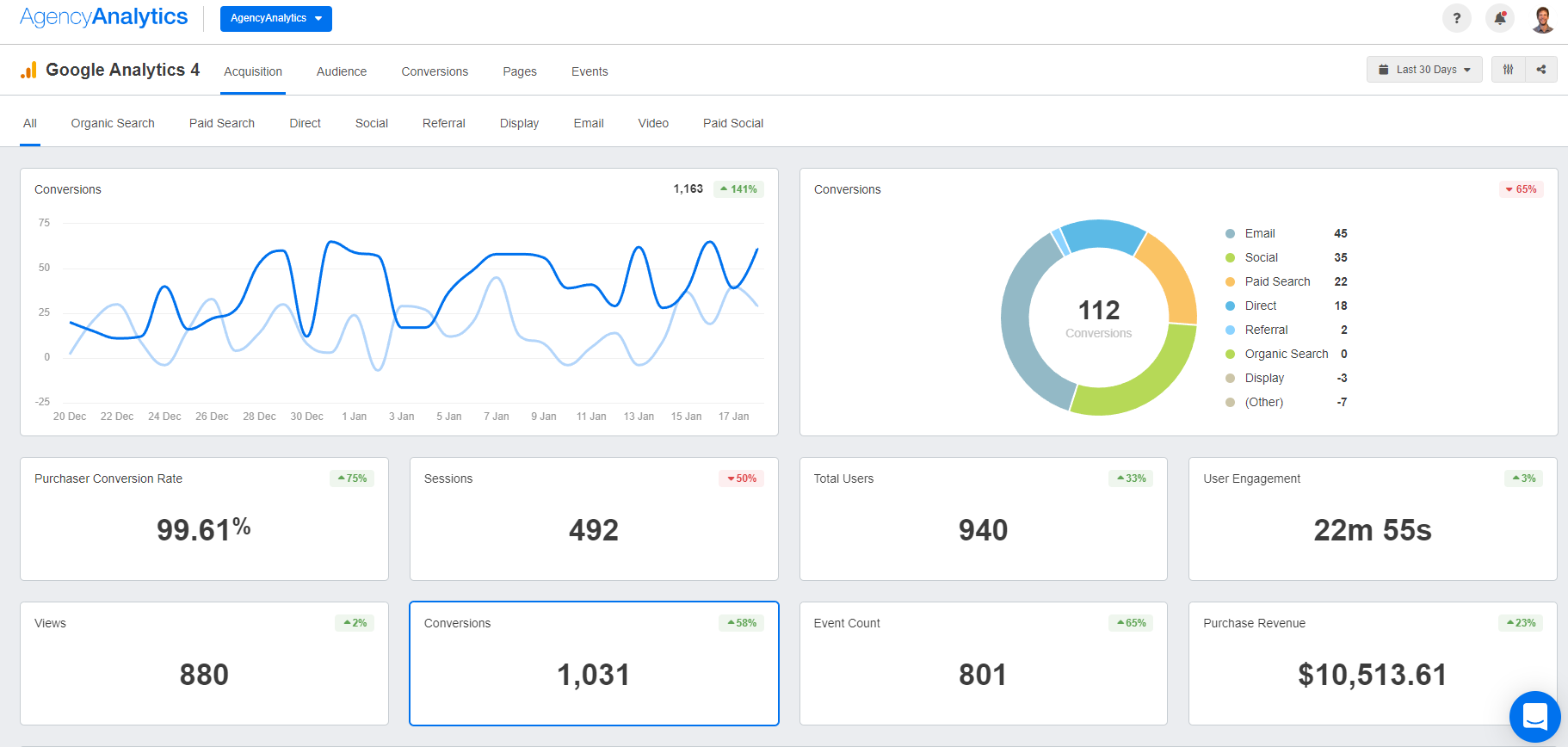
Attract local customers by creating effective website content. Monitor website performance in just a few clicks–try the GA4 integration in AgencyAnalytics, free for 14 days.
5. Local Link Building
Local link building is an off-page SEO factor that has the potential to boost your client’s credibility and organic traffic numbers. It involves acquiring links from online sources that are relevant to your client’s geo-specific target audience.
It’s more than a couple of links, though. Search engines take notice of this vote of confidence from other websites, which often leads to better local search visibility.
Backlinks remain the best indicator to Google and other search engines that a webpage is considered important by users. Links can be compared to votes–only when it comes to backlinks, those votes are not equal. The more relevant a backlink is to the target site, the more authority it has. The more expertise it displays, the more weight the vote gets.
Andy Hill, Managing Director, Distribute Digital
For best results, here are a few important things to focus on.
Backlinks from Credible Local Business Directories: If you’re unsure where to source these, explore local news sites and social media. Also, consider asking around in the local community.
Local Partnerships: If your client is new to an area, consider teaming up with a related local business. For example:
Your real estate client may benefit from a joint blog series with an established architect in the area. This arrangement leads to local backlinks for both parties.
Sponsor local events (e.g., a semi-annual neighborhood fair) to enhance brand visibility. It’s an opportunity to network in the community and build local backlinks organically (e.g., a mention in the local newspapers).
Total Number of Backlinks. Use a tool like Majestic to track the total number of backlinks that point to your client’s website.
Quality of Backlinks. A metric like Trust Flow gauges the quality of incoming backlinks, which affects your client’s website authority.
Diversity of Link Sources. Acquire backlinks from various sources, including directories, blogs, and other local listings. A mix of link types ensures there isn’t too much reliance on a single backlink.
Anchor Text Usage. Check the anchor texts of incoming links to confirm they are relevant and include local keywords where appropriate.
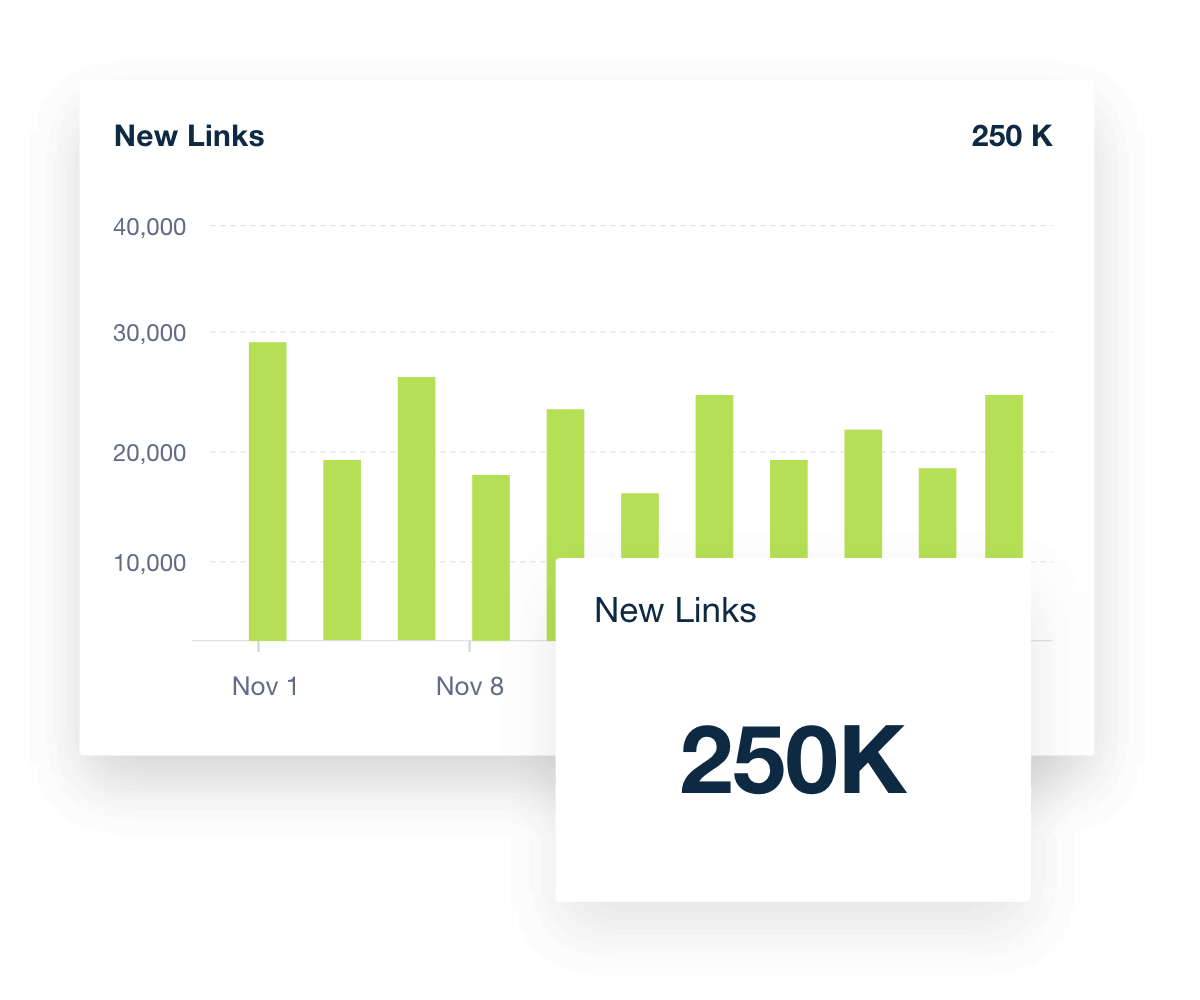
Keep tabs on your client's backlink profile and gauge website authority. Explore over 80 integrations in AgencyAnalytics, free for 14 days.
6. Online Reviews
As we previously mentioned, a strong local SEO strategy involves managing and sourcing online reviews. It’s a powerful way to leverage user-generated content and share customer feedback.
In fact, testimonials are a major influencer in whether a prospect chooses your client’s business (or not).
Reviews are what sell new business. They are vital when customers are making a decision. Without reviews, prospects don't know whether they should trust you. Positive reviews make potential customers feel "warm and fuzzy" about choosing your business out of the pack. Even professional responses to negative reviews can convince a prospect that your company is the one they want to work with.
Anya Curry, Owner, Ambidextrous Services
Manage your client’s online reputation by following these steps:
Reply to all reviews professionally. This shows that your client is proactive and willing to make improvements where necessary.
Repurpose online reviews in various locations (e.g., on social media and websites).
Encourage online reviews from satisfied customers. To do this, consider the following tactics:
Ask your client’s sales team to reach out to customers who have previously raved about your client’s business.
Offer incentives for online reviews (e.g., a discount on their next purchase).
Use a drip email campaign to ask for their verified review after they’ve completed an online transaction.
We always send out post-project feedback forms, which include the opportunity for clients to say what they think of our service. We include client comments in our online case studies.
Richard Jaggs, Director, Resolution Design

No need to monitor these reputation insights manually. Use AgencyAnalytics to automatically retrieve data and stream it into visual dashboards–try it free for 14 days.
7. Multi-Location SEO Checks
Got clients with a business in multiple locations (like a restaurant franchise)? If the answer is yes, then multi-location SEO checks are a must.
Ideally, your client should have a central website with subdomains for each location. This leads to better brand recognition without having to manage multiple websites.
When running a multi-location SEO check, ensure the following:
Up-to-Date Google Business Profiles: Include accurate information for each business location (e.g., address, contact information, business hours).
Local-Specific Keywords in Subdomains, Content, Metadata, and Listings: Even if your client has a popular business name, treat each location as a separate entity. This may mean using different geographic-related terms or referencing offerings exclusive to a local market.
Local Schema Markup for Each Subdomain: This enhances local search visibility for each separate business listing.
Local Citations. Identify external sources that are relevant to each business location to enhance visibility.
Reviews. Monitor and respond to customer reviews for each location to enhance your client’s reputation.
Local Link-Building. Source links from local websites to each business location to improve search rankings.

Consolidate your client’s local SEO insights into a professional, pre-built report template. Explore a range of dashboards and reports in AgencyAnalytics–sign up for a free 14-day trial today.
Use a Centralized Reporting System for Local SEO Insights
As we’ve covered, local SEO involves many moving parts. It’s a continuous investment, but the payoff is worth it for your client. After all, a strong strategy leads to higher search rankings, increased credibility, and more local customers.
That said, your agency needs a strategic way to monitor local SEO insights. Did your client receive a ton of new reviews following their restaurant launch? Perhaps their search visibility is dipping because their content lacks local keywords.
Whatever the case, there’s a lot of valuable local SEO data to monitor. That’s why we’ve created this in-depth downloadable content for reference!
Local SEO aside, your clients likely have complementary campaigns, like social media posts or PPC ads. Because these efforts are interconnected, you’ll need a way to consolidate those metrics in one place.
No need to rely on a manual spreadsheet or other outdated methods. Invest in a tool like AgencyAnalytics to:
Access pre-built SEO dashboards for popular local SEO platforms like Google Business Profile, GatherUp, Trustpilot, and Yelp.
Create a custom dashboard that suits your client and agency’s needs.
Stream metrics into a pre-built local SEO report template.
Automatically retrieve metrics from over 80 integrations and counting!
Manage your client’s local SEO efforts alongside other marketing campaigns. Streamline reporting and maximize your billable time–try AgencyAnalytics, free for 14 days.
Impress clients and save hours with custom, automated reporting.
Join 7,000+ agencies that create reports in under 30 minutes per client using AgencyAnalytics. Get started for free. No credit card required.
FAQs About Using a Local SEO Checklist
Need help optimizing local search for your clients? These FAQs explain how to implement a complete local SEO checklist—and why it matters.
Local SEO is the process of optimizing a business’s online presence to attract more local consumers through search engines.
It focuses on ranking in location-based searches, Google’s local pack, and maps results—making it ideal for businesses with a physical location or defined service area.
Unlike broader SEO, local SEO prioritizes relevance, proximity, and prominence. It includes tactics like optimizing Google Business Profiles, managing NAP data, earning local backlinks, and generating customer reviews.
Using a complete local SEO checklist helps agencies execute and scale these strategies consistently across multiple businesses and locations.
An effective SEO checklist should guide your team through key on-page and off-page tasks.
Start with verifying business information (NAP), optimizing title tags, creating unique location pages, and checking internal links.
Include off-page actions like citation building, review monitoring, and link acquisition from local sites.
Make sure the checklist covers schema markup, mobile optimization, and structured tracking via Google Search Console and Google Analytics.
Using a local SEO checklist template ensures nothing is missed and helps standardize your agency’s process across clients.
Mastering local SEO basics enables your agency to consistently deliver tangible results for small businesses seeking to expand their online presence.
When you optimize business categories, location pages, and content for targeted keywords, you make it easier for local searchers to find the business online—and convert.
Elements such as Google Business Profile setup, building citations on other local sites, managing reviews, and creating local content form the foundation of strong local SEO performance.
Adding paid strategies, such as Google Ads, can amplify visibility while organic rankings improve.
For your own agency, when blog posts about the value of local SEO services educate clients on why local SEO is important, you position your agency as a trusted growth partner—and win long-term business.
On-page local SEO includes the elements you directly control on a website.
This involves creating location pages, writing local keyword-optimized content, adding business descriptions, optimizing title tags, and ensuring mobile responsiveness.
Off-page local SEO encompasses external signals, including local directory listings, review management, citations, backlinks from reputable websites, and social media mentions.
To rank higher in the local pack and gain referral traffic, your local SEO audit checklist should address both sides—on-site and off-site factors.
Absolutely. Local SEO is essential for service-area businesses and those with physical locations.
When executed properly, it improves visibility in local search, drives more phone calls, visits, and online leads, and builds long-term brand equity.
Most businesses don’t fully optimize their local presence—giving your agency a major opportunity to add value.
By using a handy local SEO checklist or local SEO SOP, you can efficiently improve client rankings and deliver measurable ROI.
Using a structured local SEO checklist template ensures a consistent, thorough approach for every client.
It minimizes errors, streamlines onboarding, and makes it easier to scale services across multiple businesses or locations.
The checklist also provides visibility into what’s done and what’s pending—creating transparency for both your team and the client.
Plus, it helps junior marketers follow best practices, supports internal QA, and ensures nothing critical is skipped during local SEO analysis or reporting.
A local SEO audit checklist is essential for diagnosing performance issues and creating a roadmap to improve rankings.
It helps your team identify broken links, duplicate content, inconsistent NAP data, or missing pages and schema.
With this checklist, your agency can prioritize actions based on impact and demonstrate progress to clients in your reports.
It also strengthens your internal process—reducing guesswork and helping your SEO agency scale services with confidence.
Regular SEO targets broader, often national or global keywords with general search intent.
Local SEO focuses on capturing searches with local intent—“near me” or location-based terms—aiming to show in Google’s local pack, maps, or geographically filtered results.
Local SEO also requires attention to key elements, including service area, Google Maps listings, reviews, citations, and location pages.
A complete local SEO checklist addresses these specifics, helping your clients stand out in crowded local SERPs and gain more foot traffic or local leads.
Yes, the 80/20 rule applies well to local SEO.
About 20% of your efforts—like optimizing the Google Business Profile, fixing NAP inconsistencies, and earning a few local backlinks—can often drive 80% of the ranking improvements.
Your agency should focus on high-impact items first, and then layer in more advanced tactics like long-tail keyword targeting, schema, and structured data.
Using a local SEO audit template helps you identify what matters most and reduce time spent on low-impact tasks.
Each physical location should have its own unique page.
These pages should include localized title tags, NAP details, business description, service area info, and embedded Google Maps.
Avoid duplicate content and optimize for target keywords relevant to that location.
The local SEO checklist should include a step to audit these pages regularly to ensure they stay current and relevant.
Essential tools include Google Search Console, Lighthouse, Google Business Profile, and Google Analytics for tracking performance and identifying technical issues.
Local citation tools help monitor directory listings and NAP data.
SEO dashboard platforms like AgencyAnalytics make it easy to automate local SEO reporting, track keyword movements, and visualize campaign progress for clients.
Integrating your tools into a repeatable workflow ensures smooth execution across multiple clients and campaigns.
Run a full audit when onboarding a new client, and then every 6–12 months.
However, elements like reviews, NAP consistency, and citation health should be checked monthly or quarterly, depending on your service level agreement with the client.
Use your local SEO audit checklist to determine when and how often to monitor high-impact areas.
Keeping tabs on changes helps your agency stay proactive and maintain rankings in a competitive local landscape.
Reviews and local backlinks are two of the strongest trust signals in local search.
Encourage customers to leave reviews and respond promptly—especially to negative ones.
Local links from reputable websites, neighboring businesses, and industry-specific directories help boost authority.
Include both of these in your complete local SEO checklist as recurring tasks. They not only improve rankings but also influence customer trust and conversions.
They’re closely related—but not quite the same.
A local SEO checklist is typically a tactical, item-by-item list of tasks to complete for local optimization. Think of it as the “what to do” part: verify business information, optimize title tags, build local links, and so on.
A local SEO SOP (Standard Operating Procedure), on the other hand, goes a step further. It outlines not only what to do, but also how to do it. It includes step-by-step instructions, tool recommendations, templates, and documentation standards your team can follow.
Using both together helps your SEO agency scale effectively—ensuring consistency, quality, and results across all local SEO campaigns.
You can download a complete local SEO checklist for free from AgencyAnalytics (scroll up and look for the download box!).
The checklist covers all the essentials—on-page and off-page SEO tasks, NAP verification, review management, local link building, and location page optimization.
It’s designed specifically for SEO agencies managing multiple local clients and comes as part of a broader library of templates, including local SEO audit templates and SOPs.
Whether you're onboarding a new business or running an ongoing campaign, this checklist ensures your team follows a repeatable, results-driven process.

Written by
Faryal Khan is a multidisciplinary creative with 10+ years of experience in marketing and communications. Drawing on her background in statistics and psychology, she fuses storytelling with data to craft narratives that both inform and inspire.
Read more posts by Faryal KhanSee how 7,000+ marketing agencies help clients win
Free 14-day trial. No credit card required.


